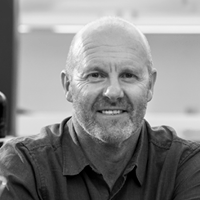
Steven Holdcroft | Plastics, Basically
2021, Climate + Environment, Science + Techonology, PFL 2020-2021, President's Faculty Lectures
Over the past decades, plastics have become cheaper, stronger and more durable. So successful have these advancements been that, regrettably, 80 to 90 per cent of plastics end up in landfills. Nonetheless, plastics hold the key to our future health and welfare.
Dr. Steven Holdcroft walked us through the fascinating world of plastics and recent breakthroughs that promise to facilitate a revolutionary impact on the global energy sector, the hydrogen economy, greenhouse gas reduction and, ultimately, climate change.
Online Event
The President's Faculty Lectures
The President’s Faculty Lectures shine a light on the research excellence at Simon Fraser University. Hosted by the SFU president, these free public lectures celebrate cutting-edge research and faculty that engage with communities and mobilize knowledge to make real-world impacts.

Dr. Steven Holdcroft, Ph.D., FCIC, is a Professor of Chemistry, Canada Research Chair, former Departmental Chair and President of the Canadian Society for Chemistry. He researches materials for electrochemical energy conversion and storage. He is the author of 300 peer-reviewed articles, several book chapters and numerous patents, and is the recipient of SFU’s Excellence in Teaching Award. With three former students, he co-founded Vancouver-based Ionomr Innovations Inc., an SFU spin-out commercializing materials for clean energy. For services to the community, Dr. Holdcroft has received the Macromolecular Science and Engineering Division Award of the Chemical Institute of Canada, and the Canadian Society for Chemistry’s Rio Tinto Alcan Award. In 2018, he was the recipient of SFU’s Outstanding Alumni Award for Academic Achievement.
Urgency and Optimism: A Summary of "Plastics, Basically" with Steven Holdcroft
Event Recording
Watch the promo video
-

Jeremy Stone | The Hidden Gifts of Retail
In this talk, Jeremy Stone will explore the critical and often hidden roles that retail businesses play in our lives.
Read More →
-

Parin Dossa | Envisioning Social Justice From the Margins
In this lecture, Parin Dossa draws on transformative stories of Muslim women (homelands and diasporas) to reveal ambiguities and challenges in reversing systemic injustice.
Read More →
-

Lieke ten Brummelhuis | Work Hard, Play Hard
In this lecture, Lieke ten Brummelhuis explains how stress develops on a regular work day, and how stress levels can be brought back to their baseline to prevent health and productivity issues.
Read More →
-

Alanaise Goodwill | Stó:lō Shxweli and Resilience
Alanaise Goodwill shares what she has learned about the importance the Stó:lō place on their connection to their lands and the practices that are used to generate land-based resilience and recovery.
Read More →
-

Steven Holdcroft | Plastics, Basically
Dr. Steven Holdcroft walks us through the fascinating world of plastics and recent breakthroughs that promise to facilitate a revolutionary impact on the global energy sector, the hydrogen economy, greenhouse gas reduction and, ultimately, climate change.
Read More →
-

Kelley Lee | Pandemics and Borders
Kelley Lee delivered an SFU President’s Faculty Lecture on how to manage travel restrictions more effectively during the pandemic.
Read More →
-
Tue, 12 Mar 2024
-
Tue, 13 Feb 2024
-
Tue, 23 Jan 2024
-
Wed, 29 Nov 2023
-
Wed, 27 Sep 2023
-
Tue, 22 Mar 2022
-
Wed, 02 Mar 2022
-
Wed, 02 Feb 2022
-
Tue, 25 Jan 2022
-
Tue, 23 Nov 2021
-
Tue, 28 Sep 2021
-
Tue, 01 Jun 2021
-
Tue, 11 May 2021
-
Wed, 07 Apr 2021
-
Tue, 09 Mar 2021
-
Tue, 09 Feb 2021
-
Tue, 19 Jan 2021
-
Tue, 10 Mar 2020
-
Tue, 25 Feb 2020
-
Thu, 06 Feb 2020
-
Tue, 26 Nov 2019
-
Thu, 14 Mar 2019
-
Thu, 21 Feb 2019
-
Wed, 21 Nov 2018
-
Thu, 11 Oct 2018



